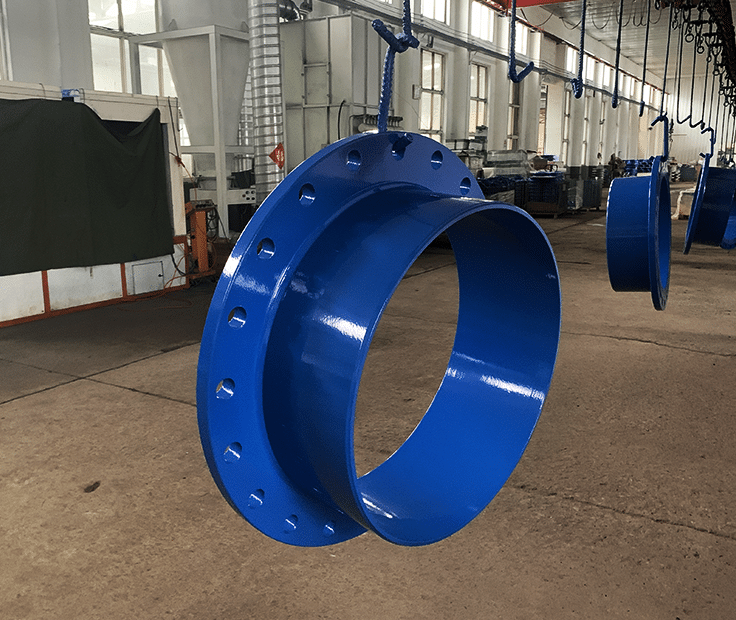What is FBE coating?
FBE coating means fusion bonded epoxy, for pipe fittings and valves, FBE coating refers to a coating method where the castings of pipe fittings and valves are first heated, then powder is sprayed onto the surface of the castings, and finally cured. It is a method that allows the powder to adhere well to the surface of the castings. This method is typically used for water, oil, and gas applications where products require non-toxicity d high safety standards.

The Difference Between FBE Coating and Epoxy Paint
The main difference between FBE coating and epoxy paint lies in the application process. FBE coating requires preheating the castings to a specified temperature before spraying, making it a hot spray , while epoxy paint can be applied directly to castings at room temperature, making it a cold spray .
Additionally, before applying FBE coating, the product surface needs to be blasted to SA2.5 level, ensuring uniform powder adhesion when it melts. This results in a smoother, more aesthetically pleasing surface and better adhesion compared to epoxy paint.
FBE Coating Procedure
Preheat : Preheat the products in the oven to 220 degrees Celsius. Adjust the conveyor belt speed as needed to ensure the products reach the ideal spraying temperature upon exiting the oven.
Spray : Evenly apply the coating to the products as they come out of the preheating oven, achieving the desired thickness as per customer requirements. The skill level of the operators and their ability to maintain a consistent speed while spraying directly influence the coating’s thickness.
Cure : The coated items proceed along the conveyor belt into the curing oven for the curing process.
Common Issues and Preventive Measures
Necessary Inspection for FBE coating
Inadequate Coating Thickness : Whether it’s too thick or too thin, promptly inspect the coating thickness after spraying. Adjust spraying speed and trajectory promptly to ensure an even application without overspray or buildup.
Curing Deficiencies : If conveyor speed and oven temperature are mismatched, cured products may experience discoloration or poor adhesion. Therefore, it’s essential to inspect cured products promptly.
Big size pipe fittings and valves are prone to poor adhesion, primarily due to the furnace temperature issue, as large pipe fittings and valves may not be thoroughly heated. Therefore, it is advisable to use pure epoxy powder with good adhesion. Pure polyester powder tends to be brittle with poor adhesion, while a mixture of epoxy and pure polyester performs slightly better. The advantage of pure epoxy lies in its good adhesion, although it is not resistant to UV radiation.
| Inspection items | Test result |
|---|---|
| Surface preparation inspection | Shot blasting to Sa2.5 |
| Coating appearance inspection | Uniform, free from pinholes, bubbles |
| Color difference inspection | compare product color with RAL international color card to see the difference |
| Powder adhesion | Use adhesion tester to test, Mean value ≥ 8 Mpa Minimum single value ≥ 6 Mpa |
| Thickness inspection | Mean ≥250 microns for 10 points |
| Wipe with MIBK methyl isobutyl ketone | Wipe it with MIBK methyl isobutyl ketone. There is no color left on the surface of the white cloth. |
| Impact resistance inspection | drop 500g metal ball from a height of 1m vertically ,the coated surface should be without cracks, wrinkles, or peeling after smashed |

